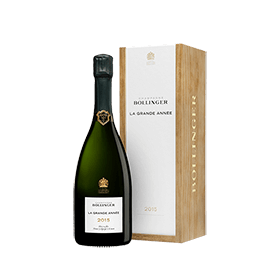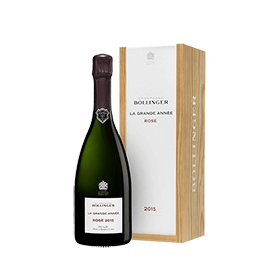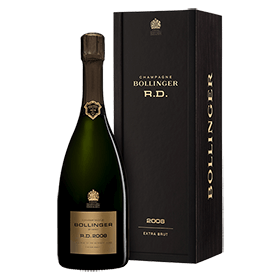Bollinger: an iconic Champagne House
The values of elegance and excellence have been advocated for almost two centuries by the Bollinger Champagne House. Affectionately nicknamed "Bolly," this house oversees a vineyard of 179 hectares of vines, located in the commune of Aÿ in the Marne department. Bollinger is one of the few estates to produce its own grapes for its blends. Pinot Noir is the signature grape variety and represents 60% of the vineyard's vines.
Driven since its origins in 1829 by the ambition to produce wines that express the identity of the great terroirs of Champagne with finesse and authenticity, Bollinger is an illustrious reference unanimously recognised for its inimitable style.
Reserve wines: a major element in the production of great champagnes
What is a reserve wine?
A reserve wine is a part of a harvest which, after vinification, is kept for a few years in vats. This original practice, specific to Champagne, was initiated in 1938, in order to compensate for a possible drop in yields during future harvests.
Although they represent a quantitative guarantee, these reserve wines can be used during the elaboration of non-vintage cuvées, in blending with the year's harvest. A real oenological treasure, these reserve wines enrich the blend with their roundness and structure, balancing the liveliness of a juice from the year's harvest and thus helping to preserve the singular style of each house over the course of the vintages.
Bollinger: a unique philosophy for reserve wines
A collection in its own right
While every champagne house keeps reserve wines from previous years, Bollinger's uniqueness lies in its real philosophy, built up over the years since 1892, around reserve wines. Harvest after harvest, vintage after vintage, Bollinger's reserve wines are kept in magnums. Unique in Champagne, the use of this format for the conservation of reserve wines is specific to Bollinger. Bollinger has an exceptional collection of more than 800,000 magnums of reserve wines, intended for blending Special Cuvée and Bollinger Rosé, which are carefully stored in the silence and darkness of its cellars. While most Champagne houses keep their reserve wines for 2 to 5 years, Bollinger extends this ageing to more than a decade. True reflections of the art of the reserve that has carved the identity of the House of Bollinger for over a century, these reserve wines exude complexity, structure and richness when blended.
The art of the reserve
The magnum is a large format known for its ability to bring out the best ageing potential of champagnes. It preserves the richness but also the aromatic purity of Bollinger reserve wines.
The magnum is preserved through a unique process, the first stage of which is a fine froth setting before the bottle is closed with a cork. Known as "micro-champagnetisation," this practice allows the entire aromatic palette of the reserve wines to be stabilised throughout the coming years. In this way the Cellar Master, in varying proportions according to the cuvée, uses these reserve wines during the blending process. These wines have a precision and character that bring out the true signature of the House of Bollinger.
Special Cuvée: Bollinger's historic champagne
The tradition of using reserve wines in the production of Bollinger non-vintage champagnes dates back to 1892.
Produced since 1911, the Grande Cuvée is made from a blend of a large quantity of reserve wines, at least 10% of which are kept in magnums. The quintessence of the singular style that has made Bollinger's international reputation, this Brut champagne delights with its structure, vivacity and freshness.
With its British-sounding name, Special Cuvée is associated with the long relationship between the estate and the UK. It was the estate's British agent who, finding the name "Brut sans année" unsuitable, suggested the name "Special Cuvée" to Georges Bollinger.
A unique sensory journey
A key element in the development of non-vintage cuvées, the collection of reserve wines is like a library of wine in the discovery of rich and powerful aromas that sublimate the art of the Bollinger blend.
Magnum: the ideal format to accompany exceptional moments
If champagne is the perfect symbol of parties and conviviality, the magnum is the perfect bottle size for celebrating festive and unforgettable moments.
What is the origin of the magnum format?
Meaning "large" in Latin, the magnum format has its origins in the 18th century.
What is the capacity of a magnum of champagne?
The capacity of a magnum is 1.5 litres, equivalent to 2 bottles of 75 cl. A champagne flute contains 12.5 cl, 12 glasses can be served with a magnum. This large format will serve between 6 and 12 guests.






